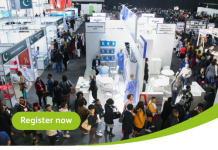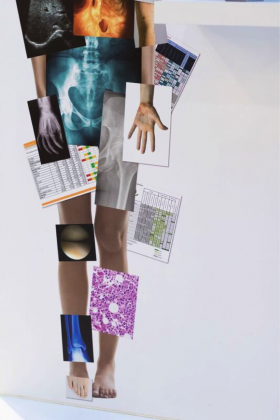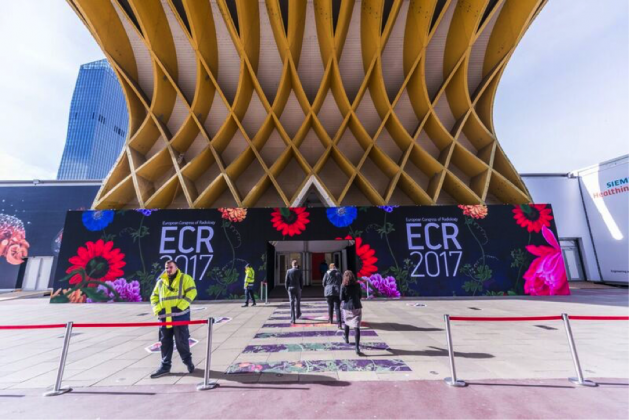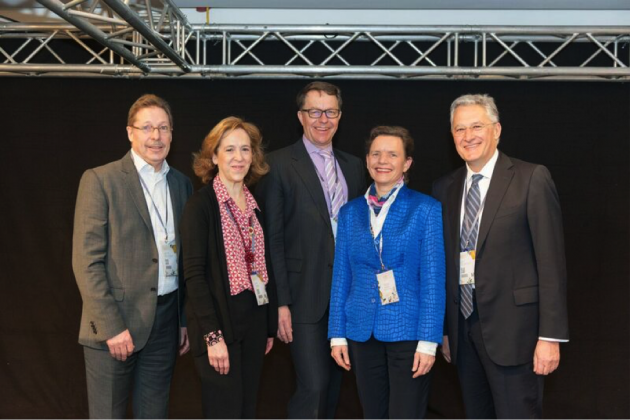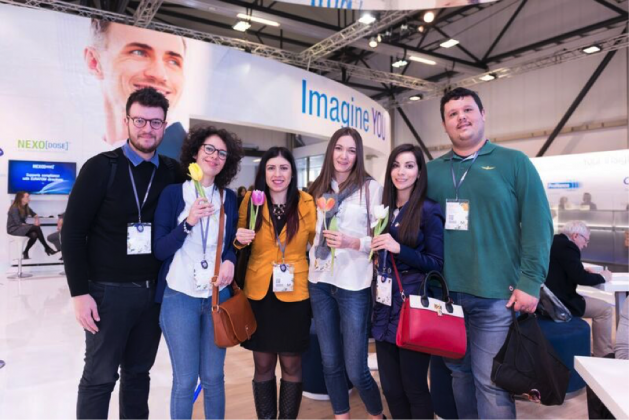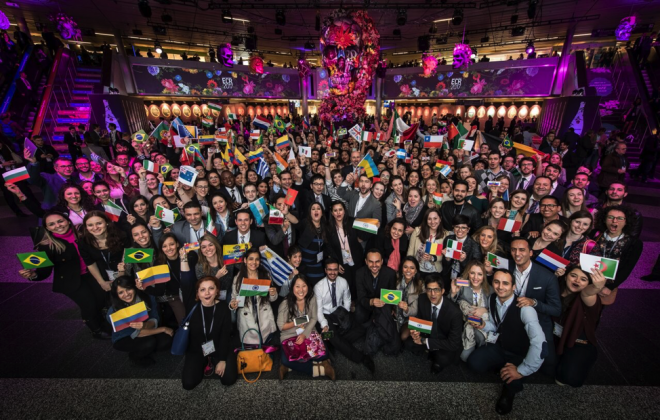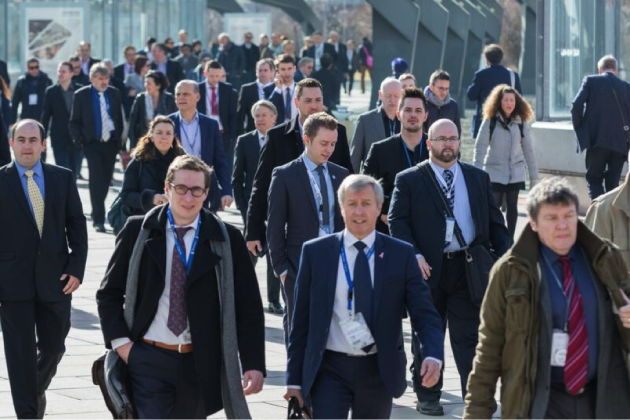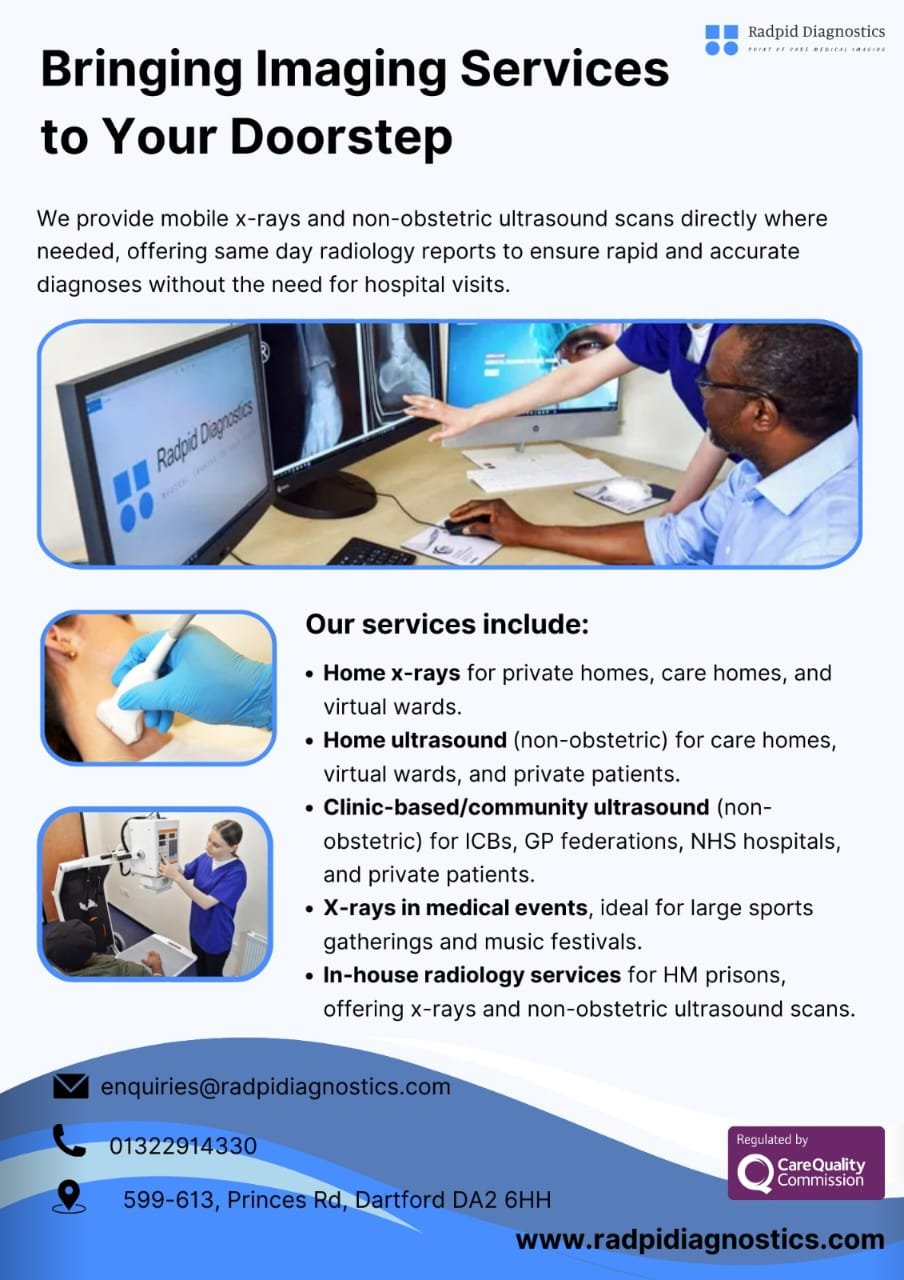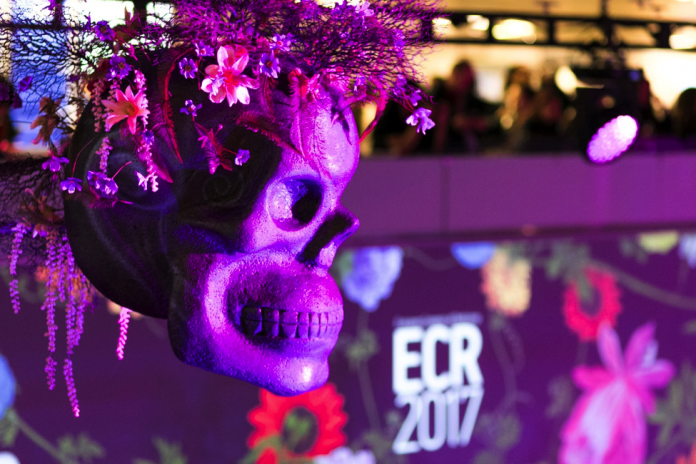
Vienna, March 16, 2017 (ESR) – The 29th European Congress of Radiology (ECR) as a resounding success for its organiser, the European Society of Radiology (ESR). Attendance figures for the congress hit an all-time high, with a total participation of 21,142 and a record number of 12,852 professional delegates, which represents a 9% increase compared to ECR 2016. In addition, more than 5,600 people registered for the ECR Online streaming platform, where almost all of the lectures and presentations could be watched live or on demand.
Great advances were also visible within the ECR’s accompanying technical exhibition, which is the largest in Europe, with over 26,000m² of exhibition space and more than 300 exhibiting companies. Some of the biggest players in medical imaging chose to launch their new products for the global market at the ECR, which obviously aroused a great deal of interest for the delegates. This in turn met with an enthusiastic response from the industry representatives, who were thrilled by the crowds filling the exhibition halls. The ECR’s increasingly international audience has helped to make it one of the most important showcase events for the industry, and this trend looks likely to continue in the future.
The organisers are certain that this enormous accomplishment rests on three pillars.
The first of these is the increasing quality of the congress’s scientific programme. Abstract submission for ECR 2017 also reached a record high, with 6,757 abstracts submitted, a 22.8% increase on the previous year’s figure. The new record includes abstracts submitted for both scientific papers for oral presentations, which increased by 18% on last year, and electronic posters for the ECR’s EPOS™ exhibition, which saw 27% more submissions. The boost in submissions for EPOS™ in particular is attributed to the overwhelming success of the Voice of EPOS sessions introduced at ECR 2016, which give poster authors the opportunity to present their work in person at the congress.
This new high in submissions lays the foundation for the increasing quality of the scientific sessions presented at the congress, which is in turn reflected in higher attendance rates in the lecture rooms. The same is true for the invited lectures, given by top experts from all over the world who are hand-picked by the Programme Planning Committee to provide coverage of the most innovative treatments and most recent research.
“Radiology is currently undergoing a metamorphosis, and there is a growing focus on functional, biological, and genetics-related imaging. Radiology is not only about detecting lesions and offering a differential diagnosis, but also about understanding how the human body works, how lesions arise and behave, and how we can monitor and influence disease processes using radiological techniques and image-guided interventions. The scientific programme for ECR 2017 truly did address these issues,” said ECR 2017 President Prof. Paul M. Parizel from Antwerp, Belgium, now Chair of the ESR Board of Directors.
The second of these pillars is the increased focus on the younger generation. This is a matter very close to Prof. Parizel’s heart. “ECR 2017 had a unique twist compared with previous editions, because our meeting was specifically dedicated to youth. As motto for ECR 2017 I chose ‘the flower gardens of radiology’. Radiology is a beautiful, fragrant, sweet-smelling flower garden, and this is the message I wanted to bring to young radiologists and radiographers, throughout Europe and across the globe. I am extremely happy and proud that this new generation in radiology has heeded my call, as could be witnessed throughout the congress by its very special, youthful, joyous and light-hearted atmosphere. ECR 2017 had more energy, more innovation, and an energetic ‘buzz’ to it, unlike many other meetings,” he stated.
The third pillar of ECR 2017’s success is certainly to be found in the greatly increased participation of radiographers; 1,995 participants represents an increase of 21% compared to last year. The ECR is now recognised as the official annual scientific meeting in medical imaging for radiographers by both the European Federation of Radiographer Societies (EFRS) and the ESR. This newly intensified collaboration between these societies has certainly borne fruits, as is documented by a strongly enhanced scientific programme dedicated to radiographers: more educational sessions, a special EFRS workshop on publishing, a basic session on the role of the radiographer, and a pros & cons session on ultrasound. Simultaneous translations for the majority of these sessions were particularly appreciated.
“Much more than other disciplines and specialties in medicine, radiology is teamwork. The team consists of certified radiologists, residents and registrars in training, radiographers, nurses, physicists, technical support staff, managers, etc. The working relationships between these various professional groups are much closer than in almost all other hospital departments. And, at the end of the day, the quality of our performance depends on the strength of the entire team,” concluded Prof. Parizel.
The next European Congress of Radiology, ECR 2018, will take place February 28 to March 4, 2018, in Vienna, under the aegis of ESR President Prof. Bernd Hamm from Berlin.
David ZIZKA
Neutorgasse 9, 1010 Vienna, Austria
Phone: + 43 1 533 40 64-545
press@myESR.org | www.myESR.org




